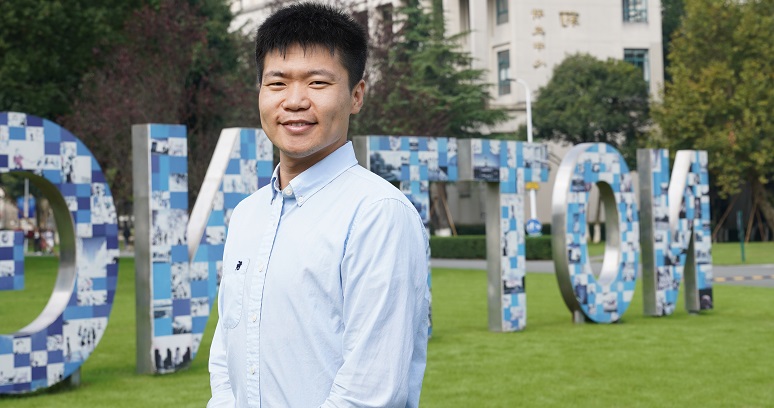
Dr Weizhuo Shi
Assistant Professor in Structural Engineering
Dr Weizhuo Shi, who previously worked at the Iowa State University, joined UNNC in 2021 and has since been working collaboratively towards China’s dual carbon goal. He is currently an Assistant Professor in structural engineering in the Department of Civil Engineering and his teaching receives glowing feedback from students.
Dr Shi was born and grow up in a small city in Heilongjiang province, in the far north of China. He was first introduced to civil engineering when he was just a child. “My uncle was a bridge engineer at the time and he was doing some big construction projects that would go on to benefit every person in the town. It meant a lot to me and I saw it as a job that could improve people’s lives.”
When Weizhuo pursued his doctoral degree at Iowa State University, he started his research on the longitudinal joint of box beam bridges. Both in Iowa and many Chinese cities, this type of bridge is very commonly used. However, it was found that many box beam bridges in use have damage in their hinged joint. Therefore, Weizhuo has dedicated himself to the study of new types of high-performance joint materials to solve the cracking problem found in hinge joints. His project was also sponsored by the Iowa Department of Transportation.
In the beginning, he built a 12-meter long experimental beam bridge in the lab, and the structural response of the full setup was evaluated under five million load cycles. By adding 15% of expansive cement to concrete, he found that the problem could be solved efficiently without increasing the cost by a large degree. Eventually, after a two-year experiment, the Iowa Department of Transportation adopted Shi's formula and used it to build a new bridge. The 12-meter experimental beam bridge he built in his lab is now a footbridge in a city park in Iowa.
After returning to China and joining the university, Dr Shi has put more emphasis on the research of sustainable construction materials. Throughout the process of infrastructure construction in China, the use of cement is indispensable. However, in the process of calcination and production of this cement (in addition to experiencing the accident of calcination at a high temperature) CO2 emissions account for approximately 5–7% of the total emissions from this process. Dr Shi is now working on innovative, high-performance concrete, to maximise structural safety and performance, while minimising energy consumption and carbon footprint using.
During his time studying and working at Iowa State University, he accumulated much experience as a young teacher. His responsibilities and interactive teaching methods are well respected by students. Weizhuo also told us that as a civil engineering student at the time, and he knew and understood the difficulties faced by the students. Through this experience, he endeavours to use more real-life samples to help them understand the theory and stimulate their interest in learning.
Although Dr Shi has only been a part of the UNNC community for a year, he has fallen in love with the university and the vibrant city. In the future, he hopes to lead on more interdisciplinary research innovation and university-enterprise cooperation projects to promote the green and low-carbon development of Ningbo and make his own contribution to the realisation of the China’s dual carbon goal.